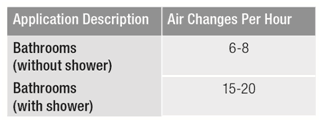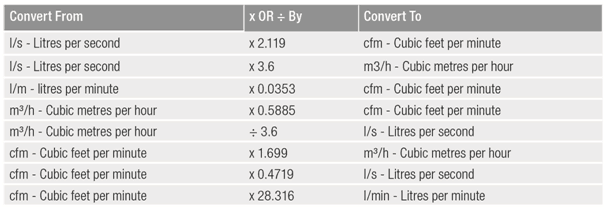A bathroom’s number one fan
Things are full steam ahead in the heat, light and ventilation sector but are electricians falling behind? Paul Skelton looks at the humble three-in-ones and where the market is heading.
 There would be very few residential sparkies who haven’t installed a heat, light and ventilation unit in a bathroom or laundry at some point in their career. It’s pretty straightforward stuff, right?
There would be very few residential sparkies who haven’t installed a heat, light and ventilation unit in a bathroom or laundry at some point in their career. It’s pretty straightforward stuff, right?
Well there may be a few things that you’re doing that are negatively impacting on the unit’s performance.
ADVERTISEMENT
For example, are you aware of the challenges raised by having LEDs in the unit? Do you know how important it is to size a room before purchasing a unit? Do you know how to properly install the ventilation ducting? And do you know where to place the unit for optimum performance?
IXL Appliances, which was established in 1858 and first introduced the iconic IXL Tastic range 30 years ago, is on a mission to better educate sparkies about the dos and don’ts of heat lamps… unless of course you’re the ingenious electrician who vented steam right back into the bathroom you were extracting steam from in the first place.
There may be no helping you.
The first hurdle may be as simple as understanding exactly how a heat lamp works.
“Heat lamps aren’t actually designed to ‘heat’ a bathroom; rather, they use infrared (IR) waves to warm the moisture in your body,” says Sampford IXL brand manager Libby Strong.
This means heat lamps, like the IXL Tastics, have no warm up period because the IR lamps provide instantaneous heat.
Now, like everything in the electrical industry, new technologies are changing the way in which end users use the product.
And what is the big development in bathroom lighting? Unsurprisingly, it’s LED.
Of course, given that LEDs offer very little heat output it is unlikely they will ever replace tungsten halogen as a heat bulb. But they are finding a home as a replacement for CFLs.
However, this has lead to an unexpected problem.
“If you haven’t got enough air flowing around the LEDs then the heat lamps can degrade the life of the diodes. This is because of the sensitive electronics used in LEDs. So, in the Tastic Neo range from IXL, you can’t run the LEDs at the same time as the heat lamp – they’ll automatically turn off when the heat lamp is on.
“In some of the cheaper products coming in from China, the manufacturers are just putting a heat lamp in with the LEDs and hoping everything will be fine, but that’s not the case.”
By the end of the year, Libby says all IXL Tastics will transfer from CFLs to LEDs, but that will have little to no impact on price.
Where most sparkies go wrong with choosing a heat, light and ventilation system is properly sizing a room to determine the space’s needs.
“You really need to do your homework.”
According to IXL Appliance’s Ventilation Selection Guide, selecting the right fan is easy.
First, you have to select your required application. The size or capacity of the exhaust fan you need is determined by the type of room it is to be installed in, as different rooms require different rates of air flow.
The rate of air flow is the number of times the total room volume of air is changed per hour (measured as ‘ACH’).
 From there, calculate the room volume in cubic metres (m3) by multiplying the length by width, by height (L x W x H). For example, a small bathroom that is 2.2m x 2.2m x 2.4m is 11.6m3 so would require a fan that is designed for a room volume greater than 12m3.
From there, calculate the room volume in cubic metres (m3) by multiplying the length by width, by height (L x W x H). For example, a small bathroom that is 2.2m x 2.2m x 2.4m is 11.6m3 so would require a fan that is designed for a room volume greater than 12m3.
Bathrooms that have high ceilings, are larger than average or have an open shower may all require additional ventilation.
To ensure adequate ventilation, include in your calculations spaces that flow directly into the bathroom, such as open plan bedrooms, laundries or walk in robes.
Remember to always round up when calculating the room volume.
After that has been determined, you have to calculate the ventilation performance requirements.
Do so by multiplying the room volume by the recommended air changes per hour for that room. Always use the higher limit.
The result is the total performance required in cubic metres per hour. So, a bathroom with shower (which requires 15-20 air changes per hour) that is 12m3 needs 240m3/hr.
Now that you know the performance requirement of your ventilation product, use the conversion table and comparison chart (Figures 1 and 2) to work out the right exhaust fan and convert different measurements.
“To make this process easier, IXL has put an easy-to-use calculator on its website, in a section called ‘Help me choose’,” Libby says.
-
ADVERTISEMENT
-
ADVERTISEMENT



